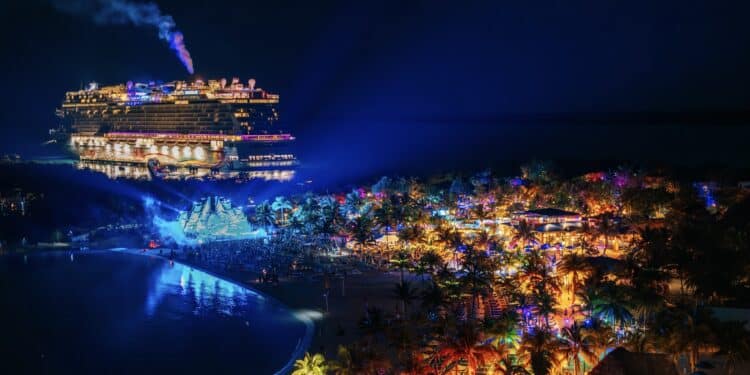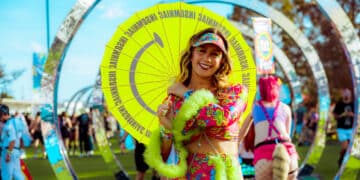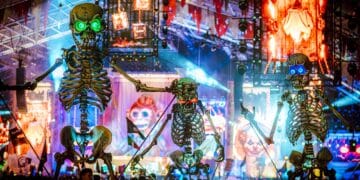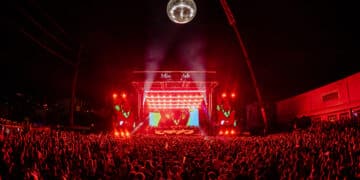At a time when San Francisco is often framed as being stuck in a “doom loop,” Portola Festival is writing a different story.
San Francisco is the spiritual home of Burning Man, the stomping ground for Outside Lands, and the canvas for a city-wide, multi-venue festival, Noise Pop. It also hosts community-driven festivities like the free, summer-long Stern Grove Festival and the rootsy Hardly Strictly Bluegrass. All things considered, these gatherings embrace the city’s eclectic ethos and diversity.
Yet, for all its cultural capital, San Francisco has yearned for a flagship electronic dance music festival that matches its ambition, energy, and reflects its community. The kind defined by massive stages, expansive grounds, art installations, and genre-specific lineups. Fast forward to 2022, and that’s exactly what Goldenvoice set off to achieve when they entered the chat with Portola Festival.
Portola Festival, a two-day, 21+ experience at Pier 80, was conceived by Goldenvoice’s Senior Vice President of Talent, Danny Bell, and has become a haven for eclectic music lovers. Born out of a trip to Europe, it was launched with the intent of showcasing the future of dance music while also honoring the past. “It’s inspired by that feeling that you’ve outgrown some of the [current] offerings we have,” Bell shared with EDM Identity in 2023. “On top of that, it’s an event focused on career electronic artists, where you’re at a festival with DJs and electronic acts.”
At a time when San Francisco is often misjudged as being stuck in a “doom loop,” Portola Festival’s ability to draw tens of thousands of attendees to its waterfront helps tell a different story. So, what gives this experience the potential to be the next true dance music renaissance in San Francisco? Let’s break it down.
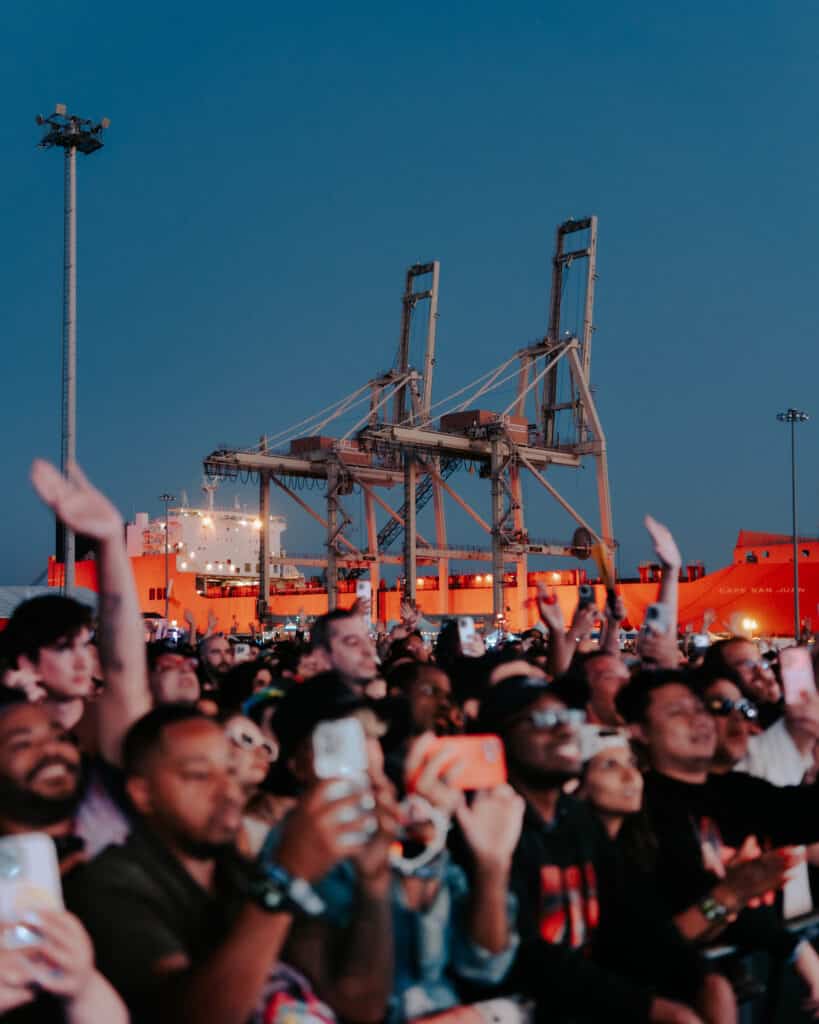
Portola Festival fills a cultural void.
It’s no secret that San Francisco has a unique relationship with counterculture and a rich dance music and underground scene. Even commercial-leaning organizers ensure that their curations are rooted locally by working with local talent beyond the music. Apart from major festivals, the Bay Area has been known for renegades, especially through the streets of SOMA and the East Bay. These events have been rooted in queer and BIPOC communities, supporting local artists, and the thrill of escaping to warehouses and lowkey spaces, going against the system.
Yet, when it came to electronic festivals, a gap existed. Portola filled that void by creating a genre-specific festival centered on these sounds. It’s clear that it’s not trying to import another city’s model, but build something that feels intrinsically San Francisco’s. By securing a historic venue, avoiding massive commercial dance acts, and showcasing innovative experiences, such as Despacio, the festival proves to have its finger on the pulse of dance music culture.
It’s also apparent that Portola didn’t aim to replicate the gravity of EDC Las Vegas or Tomorrowland, but rather to reframe it for music discovery, expansion, and reconnection. Its energy is intimate yet industrial, curated yet chaotic; it embodies a distinct identity that resonates directly with the Golden Gate City’s taste: experimental, communal, and niche. And though hiccups with ticketing and audio reveal a festival still in progress, its potential is undeniable.
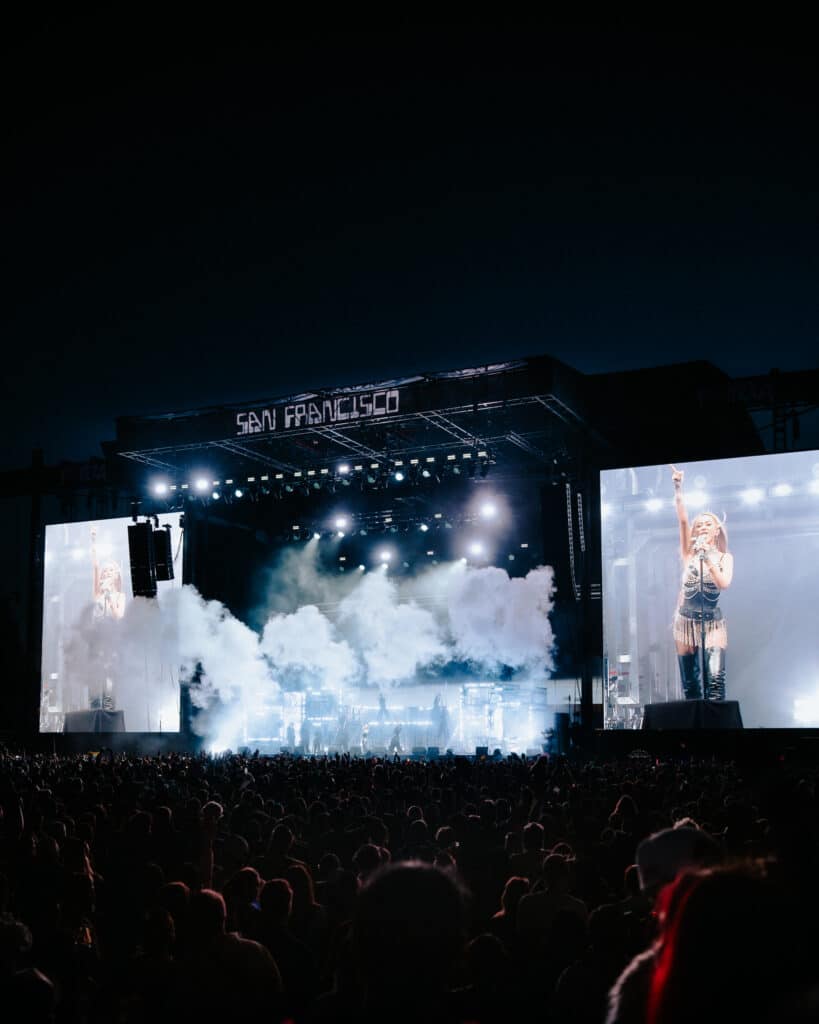
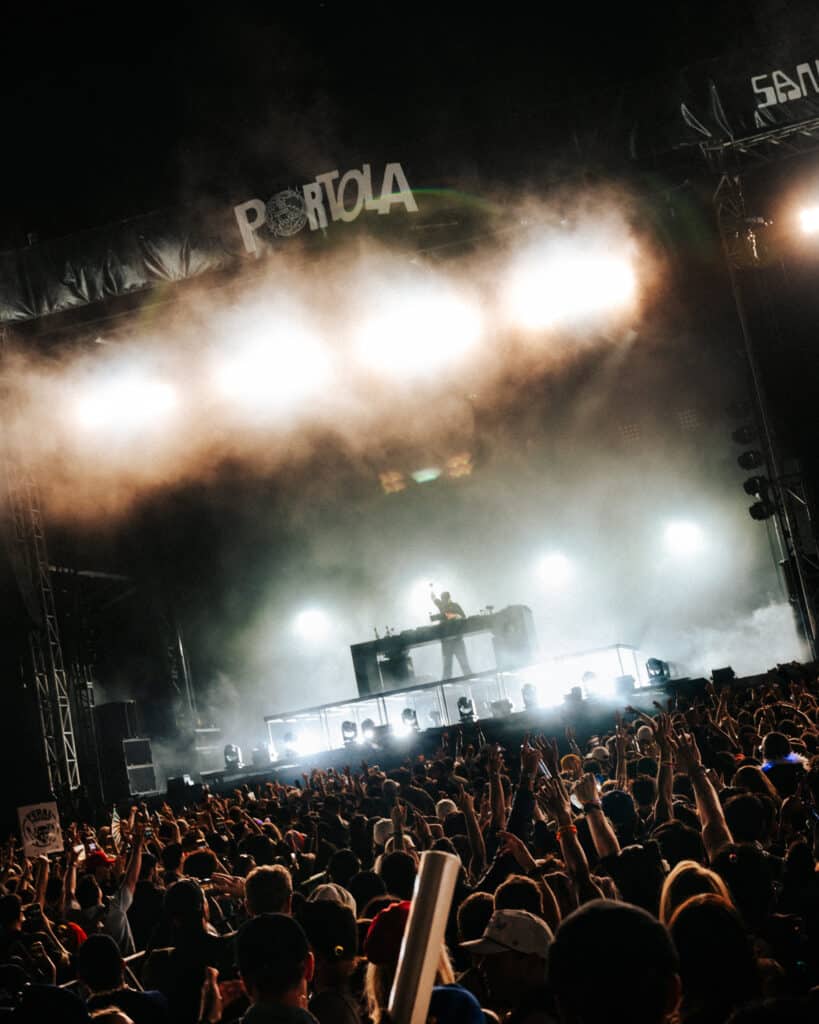
The top-tier lineup curation makes a bold statement.
Electronica, pop, techno, and house music are some of the main genres you’ll hear at Portola, setting up eclectic experiences as attendees walk from one stage to the other. Since its debut, the festival has been lauded by attendees and industry members alike for its blend of top-tier headliners and forward-thinking rising stars. While there are still plenty of adjustments to be made, one thing it has nailed is the music.
From legendary acts like Underworld, The Prodigy, and The Chemical Brothers to innovators like Brutalismus 3000, salute, and Oppidan, the festival blended music discovery with nostalgia. Performances from major acts like LCD Soundsystem, Anti Up, Dom Dolla, Moby, Mau P, Duke Dumont, and Peggy Gou were all huge draws this year. Yet there was plenty more to explore from standout acts like KI/KI, The Dare, Hamdi, Swimming Paul, Chris Stussy, Neil Frances, Blawan, and HAAi.
Portola also delivered some unique experiences, including a performance by pop icon Christina Aguilera, support for local acts like Skiis, and back-to-back sets that brought together acts such as Prospa and Kettama, as well as The Blessed Madonna and Tiga. The message this festival conveys is that it’s not about who’s hot, but about who matters.
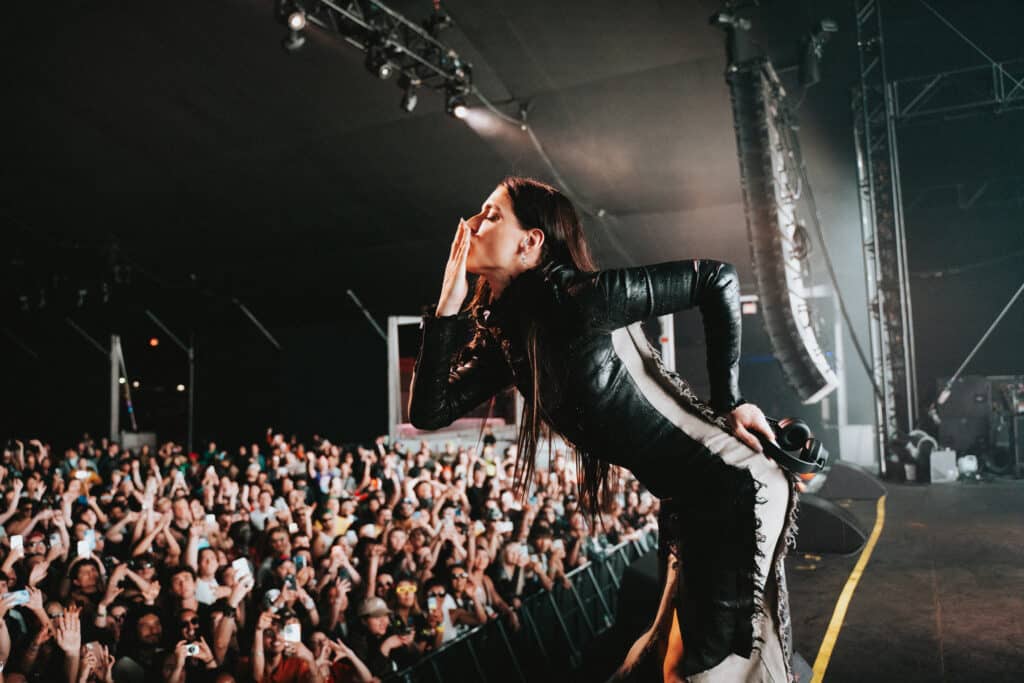
Location, location, location.
You can tell a lot about a festival by observing where it takes place. Similar to its countercultural cousin, Outside Lands, Portola happens right in the city, making it easily accessible for locals and travelers alike. Attendees don’t have to make their way into a forest or set up in the desert. It somewhat feels like that choice was intentional, since the dockside cranes and fog-chilled air evoke a distinctly San Franciscan feel.
The skyline’s reflection shines against the water as you walk through the festival grounds, making the city feel like it’s part of the staging. No artificial palm trees or eye-popping production elements, just steel, subwoofers, and sweat. That kind of authenticity feels rare nowadays, and for those of us who’ve seen our cultural spaces slowly change, it feels sacred and un-sanitized. An ode to the city’s underground and DIY aesthetics.
Additionally, the festival’s lack of parking pushes attendees to seek alternative means of transportation. Portola has partnered with BART, San Francisco’s rapid transit system, to offer free bus shuttles to attendees from nearby stops. They encourage people to use rideshare services, ride their own bikes, or utilize Bay Wheels, which offers both e-bikes and regular bikes, to get to the festival. While a byproduct of its location, it also makes this festival feel unique compared to most others across the US that lack the volume of options to utilize.
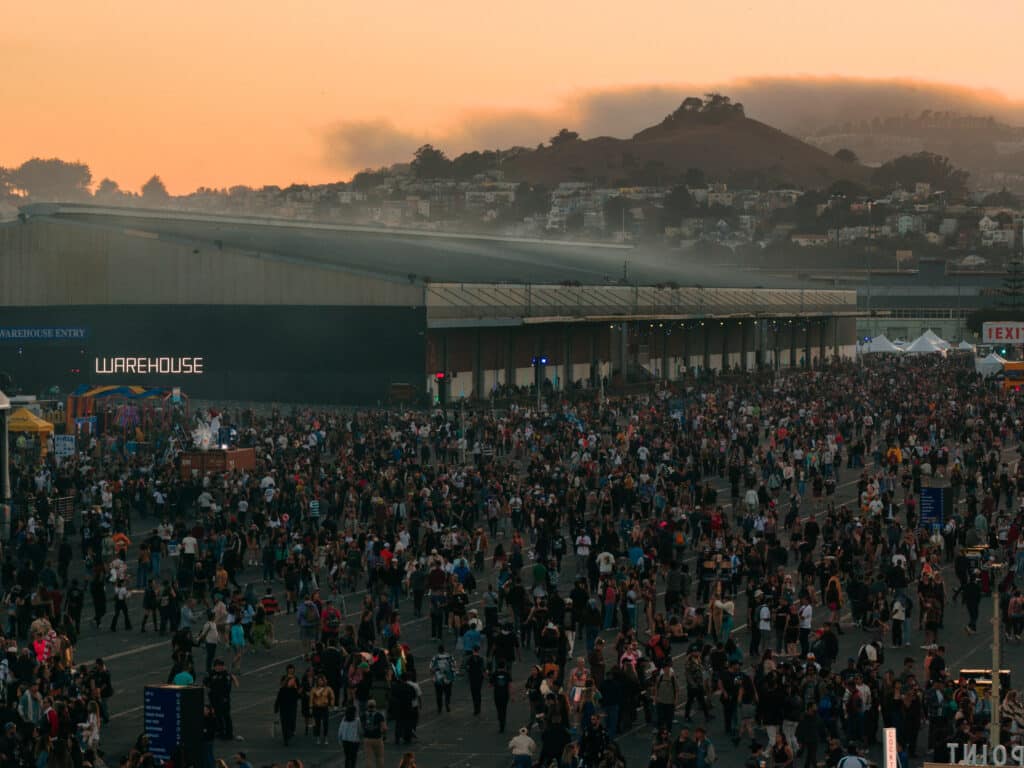
The community’s energy is unique.
Artists and location play a big role when curating an experience, but it’s the people you invite or target that help set the tone. Portola tends to draw a 21+ crowd that feels like it could only exist in San Francisco. With crossovers between queer party veterans, underground devotees, tech creatives, and first-timers sharing the dancefloor, it somehow all works.
Among all the raccoon memorabilia for which Portola has become known, no distinct “look” or influencer aesthetic has stood out. In true SF style, outfits and fashion are personal, expression and weirdness are celebrated, and the energy is collaborative, not competitive. That helped push the DIY approach that many have seen at this festival, and it only adds to the creativity that San Francisco already embodies with its diverse range of cultures.
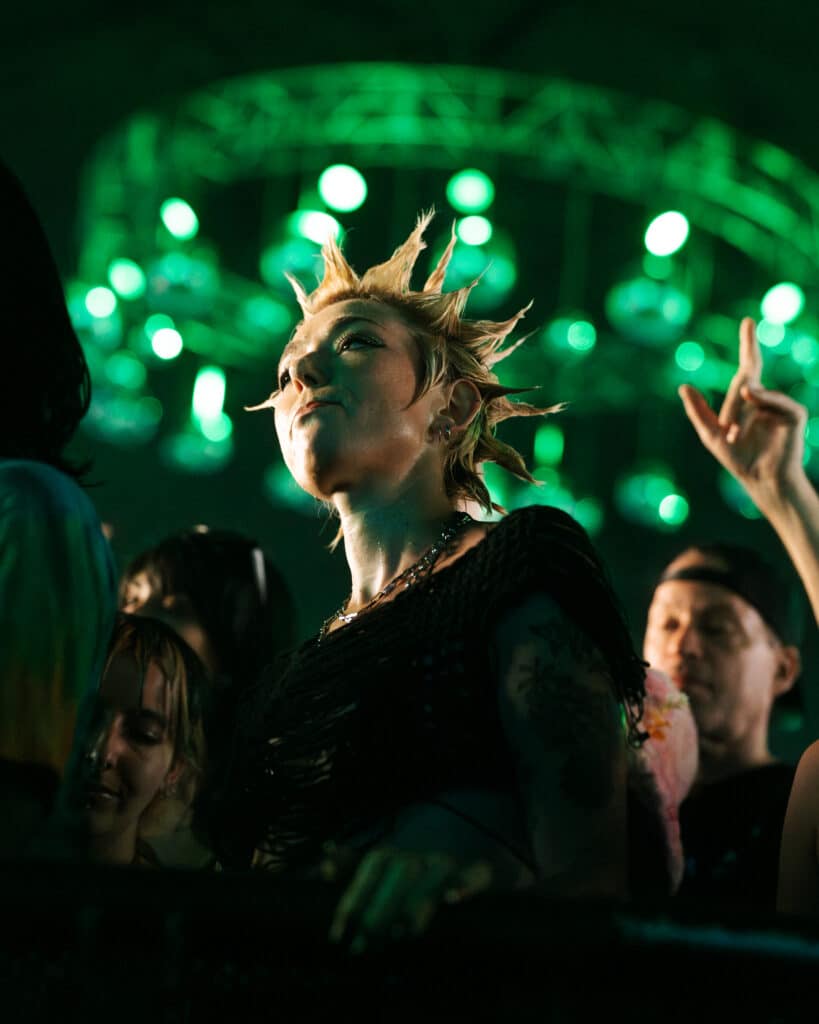
Portola Festival will continue to grow for years to come.
After year four, Portola has proven that it’s evolving and strengthening its identity with each edition. What started off as a concept in 2022 has become something people look forward to now. People aren’t just coming upon Portola, but are intentionally traveling for it, and for the local economy, that can be huge.
Way too many festivals fizzle out or get pushed to a different side of the bridge. Portola is rooted in San Francisco, and its growing success shows that it’s not in a cultural decline, but is undergoing transformation. If anything, the festival signals the start of a new chapter: one where electronic music isn’t just underground, but elevated. Where SF’s rich dance legacy finally has a flagship stage to match.
Portola feels like a cultural reset. In a city that strives to retain its creative soul in the face of gentrification, rising costs, and the so-called “doom loop,” the festival reminds us that San Francisco still knows how to dance. After all, Dom Dolla didn’t name one of his most viral tracks “San Frandisco” by accident.



